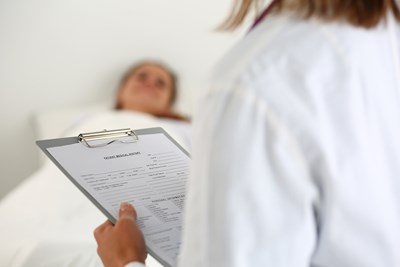Polycystic ovary syndrome is a condition that can potentially affect a woman’s menstrual cycle, fertility, hormone balance, heart, blood vessels, and overall appearance. As many as 5 million women in the United States are affected by PCOS, and it can develop in girls as young as 11 years old.
PCOS Symptoms
- Irregular menstrual periods: This is the most common symptom of polycystic ovary syndrome. Irregular periods can include menstrual intervals that last longer than 35 days, less than eight menstrual cycles per year, failure to menstruate for longer than four months, or scant, heavy, or prolonged periods.
- Hirsutism: Because of increased levels of the hormone androgen, PCOS can cause increased hair growth on the face, chest, stomach, back, thumbs, and toes, known as hirsutism.
- Weight gain: It is common for women with PCOS to experience weight gain or obesity, with the extra weight usually around the waist area.
- Anxiety or depression: The change in hormone levels can cause feelings of anxiousness. Also, the changes in appearance that occur because of polycystic ovary syndrome can cause feelings of depression.
- Acne: The increase in androgen can cause adult acne or severe adolescent acne, as well as oily skin and dandruff.
- Ovarian cysts: Your ovaries will become enlarged and will contain numerous small fluid-filled sacs that surround the eggs. This can result in ovarian cysts.
- Infertility: Polycystic ovary syndrome is the most common cause of female infertility. This is because PCOS causes problems with the ovulation process.
- Thinning hair: The increase in androgen caused by PCOS can lead to hair loss as well.
- Skin tags: These are non-cancerous excess flaps of skin that usually form in the armpits or neck area.
- Pelvic pain: PCOS can also cause severe cramping before and during menstruation.
Since there is no cure for polycystic ovary syndrome, treatment will usually focus on managing the condition, treating the symptoms, and preventing problems and complications. Menopause can sometimes affect the symptoms of polycystic ovary syndrome because ovarian function and hormone levels change as a woman ages. For example, excessive hair growth will continue during menopause, but male-pattern baldness and thinning hair will usually get much worse. Also, your risk for complications associated with PCOS will get worse as you get older and near menopause.
PCOS Diagnosis
If you are experiencing any of the symptoms associated with polycystic ovary syndrome, speak with your doctor. There is no single test that will diagnose PCOS, though there are several exams your doctor can perform to determine if this condition is causing your symptoms. These include:
- Physical exam: This includes measuring your blood pressure, BMI, waist size, and examining the areas of increased hair growth.
- Medical history: This involves speaking with the doctor about your menstrual periods, your weight changes, and other symptoms. Also, your doctor will likely ask if there is a history of PCOS in your family.
- Pelvic exam: This is performed to see if your ovaries are enlarged or swollen because of an increased number of small cysts that are characteristic of PCOS.
- Blood tests: This is to check the levels of androgen hormones and glucose in your blood.
- Vaginal ultrasound: This includes taking pictures of your pelvic area to examine your ovaries for cysts and check the lining of the uterus for any irregularities.



